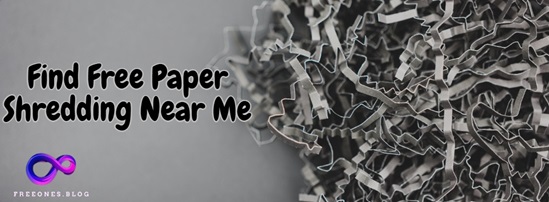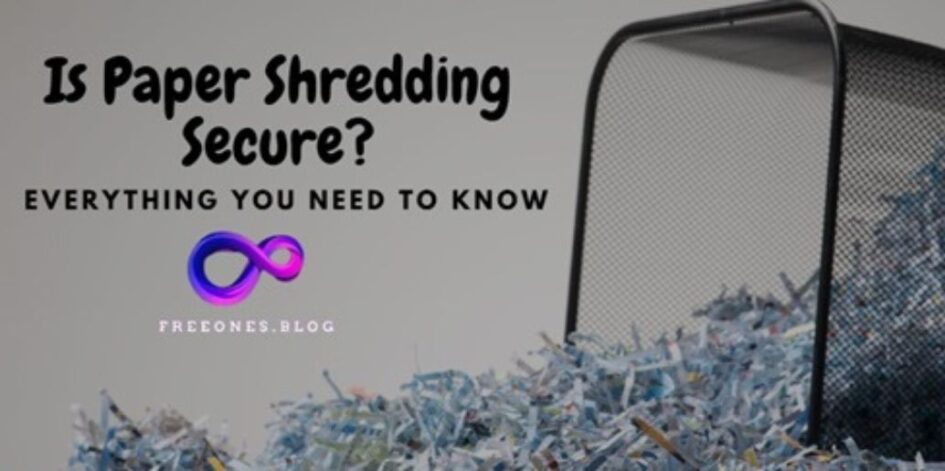Since the availability of the data asset, it is more critical to secure these from unauthorized access. It is usually thought that Digital data security is the only important thing to be considered but in fact physical documents contain large amount of sensitive information that would attract identity thefts and corporate espionage. This raises a crucial question: Is paper shredding secure? But before we go into it – let’s discuss paper shredding: why it is important, where there are possible security risks that might occur, and how to secure them against it.
Why Paper Shredding Matters
Despite the increasing reliance on digital storage, paper documents are still widely used in businesses, legal processes, healthcare, and personal records. These documents often include:
- Financial statements
- Tax records
- Medical files
- Employee information
- Proprietary business data
If these documents fall into the wrong hands, the consequences can be severe, ranging from identity theft to corporate espionage. Paper shredding is a critical step in preventing unauthorized access to this sensitive information.
How Secure Is Paper Shredding?
The security or otherwise of paper shredding depends on a number of factors namely the kind of shredder used, the method of disposal and the management of the shredded products. It is now appropriate to discuss these factors in more detail.
1. Types of Shredders
The type of shredder you use has a significant impact on the security of your shredded documents. Here are the main types:
- Strip-Cut Shredders: These shred documents into long, thin strips. While they are affordable and effective for non-sensitive documents, they are not ideal for confidential information as the strips can be reconstructed with effort.
- Cross-Cut Shredders: These cut paper into small, confetti-like pieces, making reconstruction much more difficult. This type is suitable for most confidential documents.
- Micro-Cut Shredders: These provide the highest level of security by turning documents into tiny particles. They are ideal for highly sensitive information.
2. Shredding Standards and Compliance
Many industries have specific regulations regarding the destruction of sensitive information. For example:
- HIPAA: Requires the secure disposal of protected health information (PHI).
- FACTA: Mandates the secure destruction of consumer information.
- GDPR: Includes provisions for the secure disposal of personal data.
Using shredders that meet these compliance standards ensures that your shredding process adheres to legal requirements.
3. Handling Shredded Materials
Secure shredding doesn’t end with the act of shredding. How you handle and dispose of the shredded material is equally important. Shredded paper should be:
- Mixed with other shredded materials to make reconstruction nearly impossible.
- Recycled responsibly through secure recycling programs.
- Handled by trusted personnel or shredding service providers.
Benefits of Professional Shredding Services
While personal shredders are effective for small-scale shredding, businesses and individuals with large volumes of sensitive documents may benefit from professional Shred It services. Here’s why:
1. High-Volume Shredding
Professional services can handle large amounts of paper efficiently, saving you time and effort.
2. On-Site Shredding
Many providers offer on-site shredding, where documents are destroyed at your location. This ensures that sensitive materials never leave your premises.
3. Certifications and Compliance
Reputable shredding services provide certificates of destruction, verifying that your documents have been securely destroyed in compliance with industry standards.
Best Practices for Secure Paper Shredding
To maximize the security of your paper shredding process, follow these best practices:
- Sort Documents by Sensitivity
- Identify and prioritize the shredding of highly sensitive documents.
- Use the Right Shredder
- Invest in a shredder that meets your security needs, such as a cross-cut or micro-cut shredder.
- Partner with Trusted Professionals
- Choose certified shredding service providers with a proven track record of security and compliance.
- Educate Employees
- Train staff on the importance of secure document destruction and how to handle sensitive materials.
- Implement a Document Retention Policy
- Establish clear guidelines on how long documents should be retained before shredding.
How to Find Free Paper Shredding Near Me

If you have sensitive documents piling up and are looking for secure, free paper shredding options, you’re in luck! Many communities and organizations offer free paper shredding events 2025 to help residents dispose of confidential materials safely. Here’s how you can find these services near you:
1. Search Online
Start by searching for “free paper shredding events near me” or “community shredding events.” Local government websites, libraries, and community centers often list upcoming events.
2. Check with Local Banks or Credit Unions
Financial institutions frequently host free shredding days as a service to their customers and the community.
3. Monitor Social Media
Follow local businesses and city pages on social media platforms. They often post announcements about shredding events.
4. Contact Recycling Centers
Some recycling centers partner with shredding companies to offer periodic free shredding services.
By taking these steps, you can securely dispose of your sensitive documents without spending a dime.
Conclusion
Hence, is paper shredding secure? The answer is yes, if, however, you utilize appropriate instruments, procedures of working with such data and it is possible to address a specialized service for shredding data. Hence, these measures ensure safety of your important data, desire organizational requirements and lower the chances of losses through data breaches. Recall that the secure destruction of the documents is not only a question of the sound business but the essential requirement of the modern knowledge-based economy.
The above paper should motivate you to act for your paper shredding process to be as secure as your digital data.


Leave a Reply